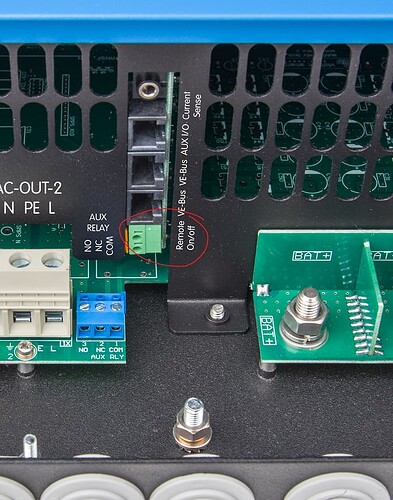At one of my training classes, the discussion about a fireman’s switch came up. the switch is not for the solar panels, but from the inverter Load side to the main db, using a contactor. Heard that this came about, as the power from the inverter to to the db couldn’t be switched off during a fire in the db ( I presume )
I haven’t heard that terminology used, but there’s a three way switch as part of my installation.
UP means that the PV system supplies the backed up side of the DB
DOWN means that the entire DB is fed from the grid
MIDDLE means that the DB gets no power at all
The presence of this switch was checked by City Power when my inverter was registered.
Assume the fire brigade doesn’t know about changeover switches or where to find it in an emergency, so they want a switch, clearly marked on the outside wall of the house.
Methinks some overreach here by the Fire Brigade
Here in Mossel Bay they have stated that on an eco estate only 2x19kg gas bottles allowed vs 2x48kg previously…reason…a smaller ‘bang’
I just roll my eyes…
This is not a new requirement, this has been there from the start. It took some time to get the right guidance what the fireman’s switch must switch. But yes, eventually the load side.
SANS10142 covers what is required under a Fireman’s Switch (basically an inverse switch, one where pushed up = off).
The reason for a contractor is that a Fireman’s switch is only rated to 20A max.
Victron has a nice switched contact that if triggered the entire unit (AC and DC) switches off. So in case of using Victron that is the way to go.
Reason fore chief wants this is because if there is solar and back up side is live it risks electrocution. Their standard protocol is to first switch off all power to house before any firefighting may start.
There is a label on the external municipal box warning that there is a second source of power. You are directed to the main DB. That has a label for the main breaker for the backed up circuits.
OK… So you turn off the municipal breaker, that’s the non-essentials killed. Then you have to find the DB and then you can turn off the essentials.
But the inverter is still running and there’s a still short runs of cable with various voltages AC and DC…
I see now how this can be a problem.
Even if they turn the inverter off, there’s still the battery… To be safe they’d have to turn off the municipal breaker, find the DB, throw the main breaker there, then find the PV system and turn off the battery, then throw the DC breakers for the panels.
It’s not ideal.
Can You have one switch that does all this.
My system has been made quite safe for electricians, but for firemen…
Which one?
And will it be accepted at signoff?
Like the idea to switch EVERYTHING OFF quickly.
So may as well look deeper into this seeing as I am moving the system.
Are you talking about the Safety Switch assistant? Using a fireman’s switch to activate that is sufficient? That would be awesome, that requires minimal wiring.
On the Multi-RS you can also configure the Aux input as a Safety switch.
It is probably the remote on/off…
All I know is that if the fireman’s switch is toggled everything goes off.
In my opinion safer than a contactor
The remote on off is different to the safety switch assistant.
The safety switch assistant actually disconnectes the inverter input and output all at once.
We have the emergency stop button for this purpose.
If you really want to be smart you also pass your mppt remotes through it then it stops all charge and discharge sources/loads in the system at once.
How?
Interesting…though the safety switch assistant says *Only the AC output will be switched off."
Is there any other way to completely isolate the inverter and stop all inputs and outputs?
The remote on/off @PierreJ mentioned above will do that. It will be like switching the power switch on the front of the inverter off.
If you think about if carefully… it cannot switch off the AC input. That’s connected to the grid. Switching the AC out off is however sufficient to isolate a downstream DB board, which is the goal here.
The Multi also cannot disconnect the DC. There is no contactor or switching device there. You can switch off the “bridge” as we call it, the 4 banks of MOSFETs that creates the AC, and in that way prevent DC from going over to the AC side (and that will also happen with both the above described methods), but if you really have a requirement that the DC should be isolated separately, neither of these methods will do that.
But… I don’t think that is a requirement. The requirement is to switch the AC off and not have an inverter take over and keep it live.
The IEC 62109 standard addresses the safety of power conversion equipment (PCE) in solar systems, including the electrical aspects of isolation for fire safety. It sets minimum requirements for design and manufacture to protect against various hazards, including fire. For example, it specifies how isolators should be designed and used to ensure proper isolation of solar panels and systems in case of fire.

